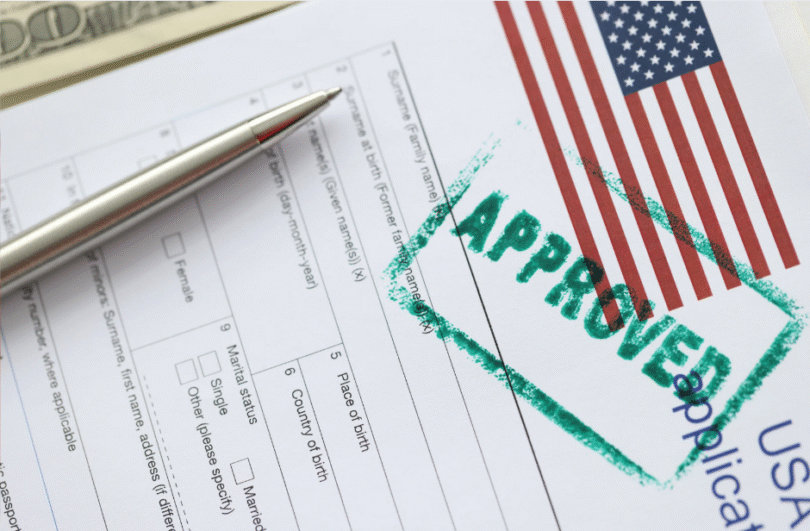If you’re someone dreaming of working in the United States but worried about the visa process, you’re not alone. The idea of getting a visa sponsored by a U.S. company can seem confusing and even scary. But you don’t have to worry! In this blog post we’ll take a deep look at what visa sponsorship really means, the current trends, what’s changing in 2025, and how international workers like you can still find amazing opportunities in the U.S. This will make the entire process to be less confusing and no longer scary to you.
What is Visa Sponsorship?
Visa sponsorship is when a company in the United States agrees to help a foreign worker come to the U.S. to work legally. The company does this by filing certain documents and proving to the U.S. government that:
- They really need this person for the job
- The job can’t easily be filled by someone already living in the U.S.
Once the company agrees to sponsor you, they will help you apply for a work visa. It’s important to know that not all companies are willing to sponsor foreign workers, so part of your job search will include looking for companies that offer this kind of support.
Common Work Visas That Need Sponsorship
There are different types of U.S. work visas that require sponsorship. Let’s look at the most common ones and the changes that will be coming in this 2025
1. H-1B Visa (Specialty Occupations)
This is the most popular visa for professionals like software developers, engineers, doctors, and financial analysts. To qualify for an H-1B:
- You need at least a bachelor’s degree
- The job must require a degree in a specific field
- Your employer must submit a petition to the government
What changes are coming in 2025?: The U.S. government is now more careful about who gets an H-1B. They want to make sure the job truly needs special skills. There’s also a cap (limit) of 85,000 visas per year.
2. L-1 Visa (Intra-Company Transfer)
This is for people who already work for a company that has an office in the U.S. and want to transfer there.
- You must have worked for the company for at least 1 year
- The job in the U.S. must be similar to your current job
What changes are coming in 2025?: The U.S. is checking more carefully to make sure the company transfer is real and not fake.
3. O-1 Visa (Extraordinary Ability)
This is for people who are outstanding in their fields, such as scientists, artists, musicians, or business leaders.
- You must show awards, publications, or other signs of success
- Your talent must be recognized nationally or internationally
What changes are coming in 2025?: More tech and science professionals in newer fields like Artificial Intelligence (AI) are being considered for this visa.
4. EB-2 and EB-3 (Green Card Sponsorship)
These are employment-based immigrant visas (green cards) for skilled workers and professionals.
- Requires a job offer and labor certification
- Can lead to permanent residency (green card)
What is the good news?: These are still strong options for long-term workers in the U.S.
What’s Changing in 2025 and Beyond?
The U.S. government has made some big changes in the way it handles foreign worker visas. Some of these changes include:
1. Stricter Application Review
Officials are now looking more closely at each application. They want to be sure the job is real and the person is truly qualified. If the job is not clear or doesn’t require special skills, it may be denied.
2. Preference for U.S. Workers
There’s a stronger push to give U.S. citizens and permanent residents the first chance at job openings. This means employers must prove that they tried and failed to find a local candidate before hiring from abroad.
3. Rise of Remote Work
Since the COVID-19 pandemic, many companies now allow employees to work from home. This includes hiring people who live outside the U.S. for remote positions. This trend means you might be able to work for a U.S. company without needing a visa—at least in the short term.
4. Focus on Skill Shortage Areas
U.S. employers are still looking for workers in industries where there are not enough skilled people. These industries are more likely to sponsor visas.
Some of these industries include:
- Technology: Software development, cybersecurity, data science
- Healthcare: Nurses, doctors, lab technicians
- Engineering: Civil, electrical, mechanical, and petroleum
- Finance: Accountants, analysts, financial advisors
How to Increase Your Chances of Getting a Sponsored Job
Getting a job with visa sponsorship is not easy, but here are some tips to help you stand out:
1. Choose the Right Field
Focus on industries that are more open to sponsoring visas. Tech, healthcare, finance, and engineering are among the top choices in 2025. These fields have higher chances of companies offering sponsorships because they urgently need skilled workers.
2. Build Your Skills
- Get the right degrees and certifications.
- Stay updated with industry trends.
- Learn tools or software commonly used in your desired job (e.g., Python for data science, AWS for cloud jobs)
The more skilled you are, the more likely a company will want to hire and sponsor you.
3. Apply to the Right Companies
Research companies that have a history of sponsoring workers. Websites like MyVisaJobs and H1BGrader can help you find them.
4. Be Clear in Your Resume
Your resume should:
- Be easy to read
- Match keywords in job descriptions
- Focus on your achievements and how you added value in past jobs
Don’t forget to mention your willingness to relocate and need for sponsorship in your cover letter.
5. Network Online and Offline
Many jobs are filled through referrals. Here’s how you can network:
- Connect with professionals in your industry on LinkedIn
- Join professional forums or communities
- Attend online events, webinars, or local job fairs (if possible)
6. Stay Updated
Follow the news on U.S. immigration through government websites (like USCIS.gov) or trusted news outlets. Rules can change, and it’s important to know what’s going on.
7. Consider Internships or Training Programs
Some U.S. companies offer internship or trainee programs to international candidates. These could lead to full-time jobs and sponsorships later.
8. Work with Global Consulting or Staffing Agencies
Some staffing agencies work with companies that sponsor visas. These agencies can guide you through the job hunt and visa application process.
Frequently Asked Questions (FAQs)
1: What is the current limit for H-1B visas?
A: There are 85,000 H-1B visas available each year, including 20,000 reserved for those with U.S. master’s degrees.
2: Can I apply for more than one visa at the same time?
A: Yes, you can apply for different visa types as long as you qualify for each one.
3: How long does the visa sponsorship process take?
A: It depends on the visa type. H-1B visas take a few months, while green cards can take years.
4: What happens if my visa application is denied?
A: You may appeal the decision or try another visa route. An immigration lawyer can help.
5: Do all companies offer sponsorship?
A: No, only some do. You’ll need to look for those that are open to hiring international workers.
6: Can I switch jobs while on a sponsored visa?
A: Yes, but your new employer must file a new visa petition for you.
7: Can I work remotely for a U.S. company without a visa?
A: Sometimes, yes. If the job doesn’t require you to be in the U.S., you can work remotely from your home country.
8: Is it easier to get a green card now?
A: Some categories are seeing faster processing times, especially in high-demand professions.
9: What is labor certification and why is it important?
A: Labor certification is a process where the employer proves that hiring a foreign worker won’t negatively affect U.S. workers’ wages or job opportunities. It’s required for EB-2 and EB-3 green card applications.
10: Can I study in the U.S. first and then apply for a sponsored job?
A: Yes. Many students in the U.S. on F-1 visas use Optional Practical Training (OPT) to work after graduation. If they get a job, the employer may decide to sponsor them for a work visa.
Conclusion
Visa sponsorship is still possible for international workers in 2025, but it’s more competitive and more focused on real skill and job needs. The best thing you can do is prepare yourself by gaining experience in in-demand fields, researching the right employers, and keeping your application clear and honest. The American dream is still alive, and with the right steps, it can be yours too.
If you’re serious about working in the U.S., don’t give up. Opportunities still exist for the right candidate with the right skills. Keep learning, stay connected, and be ready when the right job comes along.
Good luck on your journey!






